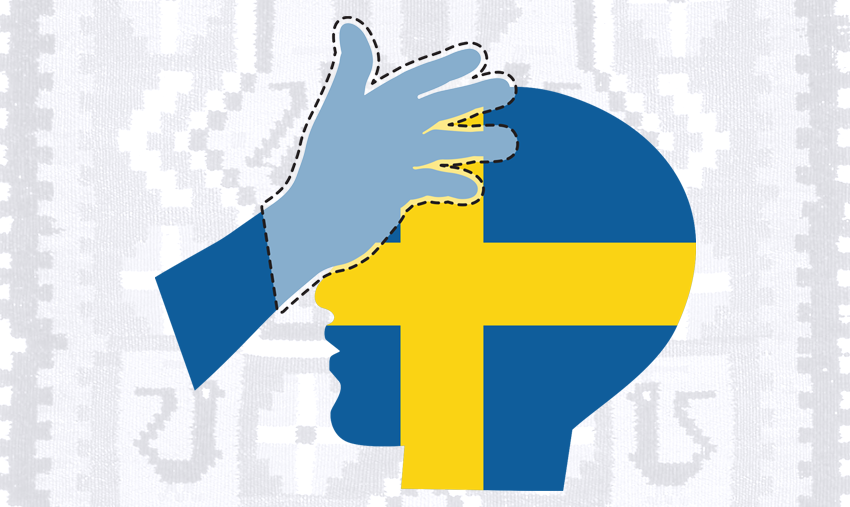What kind of napped leather was used specifically in old-timey Swedish gloves?
Don't scroll until you've answered!

Duh! is a weekly column that gives circuitous answers to obvious questions. If you dig it, you can find 100 more of these essays in the Geeks Who Drink book, Duh!.
As a matter of fact, the type of leather is named for the gloves: when they became popular in France in the late 19th century, the locals called them “Swedish gloves” – gants de suede – and before long, anything made with that soft, furry, hellaciously easy-to-stain inner skin got the same name.
But that still doesn’t explain the whole thing about swedes and rutabagas. That’s right, we’re throwing our vegetarian friends a bone something that isn’t a bone, and pivoting right to root vegetables.
Most of the world calls that crazy-hardy, yellow turnip a “swede.” It comes from Sweden, after all,1 and we have to admit “swede” is a pretty good abbreviation of “Swedish turnip.”
It’s not good enough for Americans, though. We use “rutabaga,” which is – get this – bastardized Swedish for “root bag.” And then there are the Scots, who use “neeps,” pairing it with potatoes for “neeps and tatties,” which still sounds to us like a practical joke they’re playing on foreigners, but apparently isn’t.
If anyone had ever bothered to ask Swedish people, they’d have pointed out that the veggie is really called kålrot (“kale root”)… and by the way, what kind of weirdo would say “root bag”?
Reader, I wish the confusion ended there, but it does not. Consider that the rutabaga’s species, Brassica napus (hence “neeps”) is also the species of rapeseed/canola.2 And a certain sort of botany nerd sees “Brassica” and sighs, “here we go”: indeed, the rutabaga originated with a cross between a turnip and B. oleracea, the species that gives us (deep breath) broccoli, Brussels sprouts, cabbage, cauliflower, collard greens, kale, and kohlrabi.
Family Brassicaceae is wild, y’all. But yeah, that’s why all those things pretty much taste the same… and that’s about all we can think to say about rutabagas,3 which means we’ll play you out with a list of other words that came to us through Swedish:
- A smorgasbord is a buffet, of course. But you might be surprised to learn it literally means “butter-goose table.” There’s a whole reason why that you can check out if you care, but for now just remember “butter-goose table” the next time you’re going back for your third plate of Bourbon Street chicken.
- An ombudsman is someone within an organization who advocates for either the members or customers of that organization. It comes from ombud, which just means “representative,” in that proxy or power-of-attorney sense. Not sexy, but important!
- Fartlek is that distance-runners’ training exercise where you just sorta haphazardly mix together slow and fast sections, over flat and hilly terrain. It literally means “speed play”; the fart part means “speed.” I’ll cut to the chase: The Swedish for “speed freak” is fartfreak. You’re welcome.
- Or maybe Russia, but they’ve been taking enough things lately to not take credit for this.
- By the way, “rapeseed” comes from the Latin for turnip… but don’t confuse it with B. rapa, which is the species of the actual turnip, and also somehow bok choy. 3 Or suede, for that matter. Have you ever really wondered what’s up with that Carl Perkins song? We haven’t.
- Or suede, for that matter. Have you ever really wondered what’s up with that Carl Perkins song? We haven’t.
